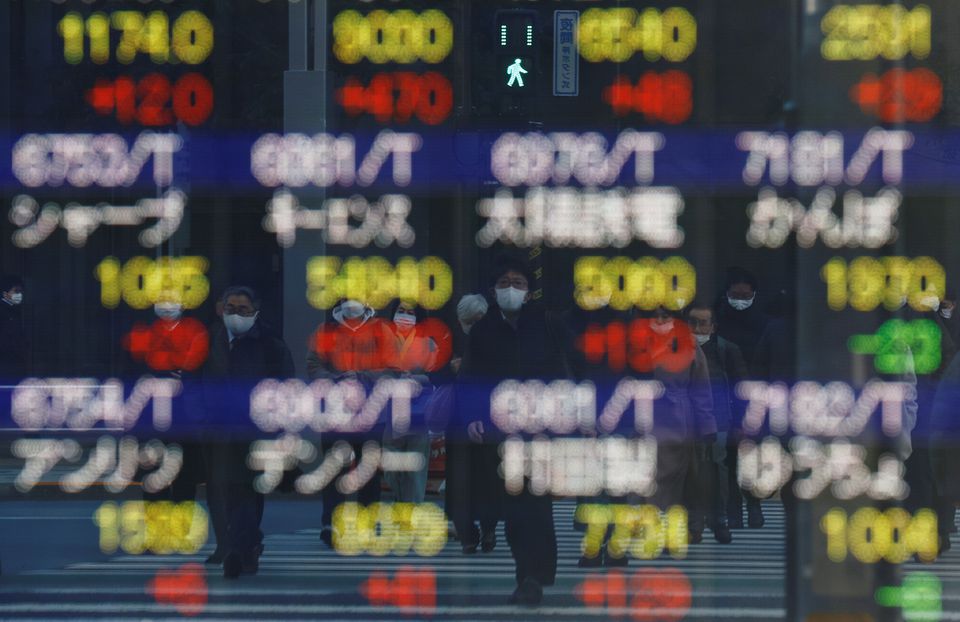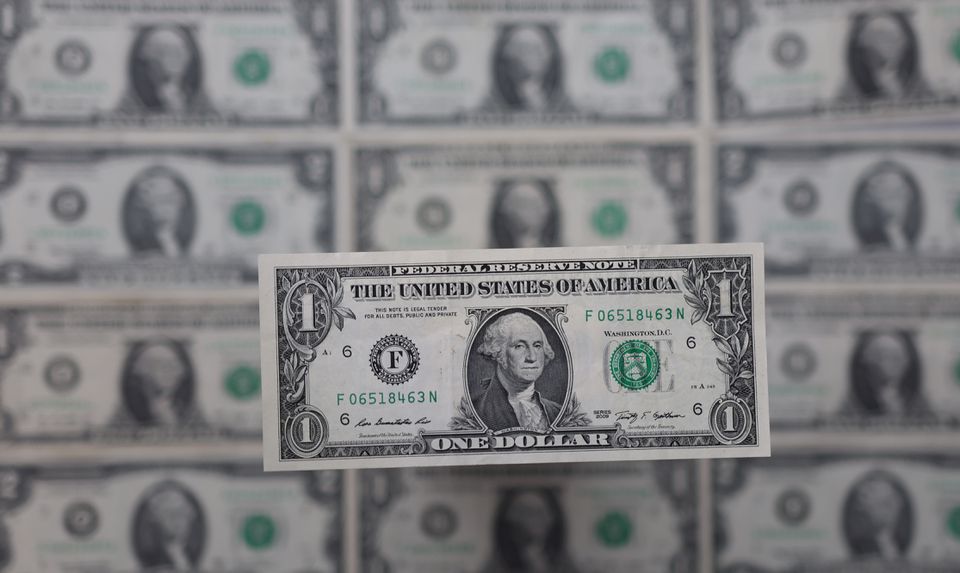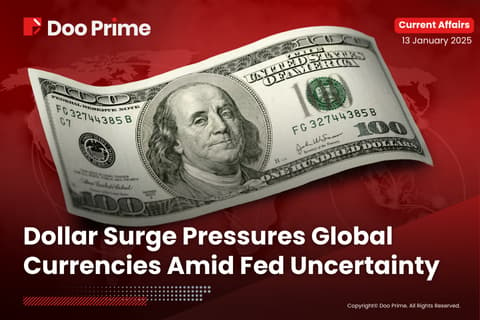WORLDWIDE: HEADLINES
Japan’s Wholesale Inflation Stays Near Record On Ukraine War, Weak Yen

Japan’s wholesale inflation remained near record-high levels in March as the Ukraine crisis and a weak yen pushed up fuel and raw material costs, data showed on Tuesday, adding strains to the resource-poor economy heavily reliant on imports.
While rising wholesale prices will help accelerate consumer inflation toward the central bank’s elusive 2% target, it could hurt an economy still reeling from the coronavirus pandemic, analysts say.
The corporate goods price index (CGPI), which measures the price companies charge each other for their goods and services, rose 9.5% in March from a year earlier, data showed.
That followed a revised 9.7% spike in February, which was the fastest pace on record, and exceeded a median market forecast for a 9.3% gain. The March index, at 112.0, was the highest level since December 1982, the Bank of Japan (BOJ) said.
“With raw material costs rising so much, companies won’t be able to make money unless they raise prices. The days of discount war are over,” said Takeshi Minami, chief economist at Norinchukin Research Institute.
“Core consumer inflation may accelerate to around 2.5% later this year and stay above 2% for longer than initially expected, weighing on consumption and the economy,” he said.
The yen-based import price index jumped 33.4% in March from a year earlier, the data showed, a sign the yen’s recent declines are inflating the cost of imports for Japanese firms.
Japanese companies have been slow in passing on rising costs to households as soft wage growth weighed on consumption, keeping consumer inflation well below the BOJ’s 2% target.
But analysts expect core consumer inflation to accelerate around 2% from April due to surging fuel costs and the dissipating effect of past cellphone fee cuts.
The rising inflationary pressure heightens the chance the BOJ will revise up its inflation forecast at its next quarterly review due April 28, analysts say. The bank’s current forecast is for core consumer inflation to hit 1.1% in the year that began in April.
Full coverage: REUTERS
EXCLUSIVE Some Banks Stop Credit For Oil Imports By Rosneft-owned India Refiner Nayara -Sources

India’s HDFC Bank and some foreign banks have stopped offering trade credit for oil imports to Nayara Energy, a Russian-backed refiner, and some suppliers are seeking payment upfront to avoid potential problems resulting from western sanctions against Moscow, four banking and industry sources said.
Nayara has not been sanctioned as part of the international response to Russia’s invasion of Ukraine, but Russian energy giant Rosneft, which owns 49% of the Indian refiner, has been.
To avoid the need for credit to fund overseas trade, the Mumbai-headquartered company is selling more of its refined fuels in India, two of the sources said.
All of the sources declined to be named because they are not authorised to speak to the media.
Nayara did not respond to a request for comment. Rosneft did not immediately respond to a request for comment.
Nayara imports crude oil worth about $1 billion every month on average for its 400,000 barrels per day Vadinar refinery in India’s Gujarat state, the two sources told Reuters.
India’s HDFC Bank (HDBK.NS) and international banks such as Citibank (C.N), JP Morgan (JPM.N), Deutsche Bank (DBKGn.DE) and Japan’s Mitsubishi UFJ Financial Group (8306.T) have stopped opening and confirming Letters of Credit (LCs), which are a standard form of payment guarantee in the oil trade, for Nayara, four sources said.
Citigroup, JP Morgan, Deutsche Bank and Mitsubishi UFJ declined to comment on Monday, while HDFC did not respond to requests for comment.
Kesani Enterprises Co Ltd, a consortium led by Trafigura Group and Russia’s UCP Investment Group, is the other major stakeholder in Nayara, also with a 49.13% stake.
Kesani has pledged all of its shares in Nayara to Russian bank VTB, from which it took a loan to fund its acquisition of the Indian refiner in 2017, a fundraising document Nayara issued in August last year showed.
Full coverage: REUTERS
WORLDWIDE: FINANCE/BUSINESS
Asia Stocks Wobble, Dollar Firm As Markets Wary Before Key U.S Inflation Data

Asian shares were down while the U.S. dollar held strong on Tuesday, as Treasury yields spiked to a three year high ahead of U.S. inflation data which could foreshadow even more aggressive interest rate hikes from the Federal Reserve.
MSCI’s broadest index of Asia-Pacific shares outside Japan (.MIAPJ0000PUS) was down 0.3%, after U.S. stocks ended the previous session with mild losses.
Australian shares (.AXJO) were down 0.65%, while Japan’s Nikkei stock index (.N225) slid 1.5%.
Higher U.S. bond yields were supporting the dollar, with the U.S. currency’s index measure against six peers moving back over 100 to test last week’s near-two year high.
The Japanese currency bore the brunt of the losses against the greenback, which rose to 125.77 yen overnight, its highest since June 2015.
The yen has been under the gun over recent months as the Bank of Japan has committed to ultra easy policy even as many other major central banks, led by the Fed, have embarked on tightening monetary conditions.
The euro was buffeted by politics, unable to hold onto gains from its mini-relief rally on Monday after French leader Emmanuel Macron beat far-right challenger Marine Le Pen in the first round of presidential voting.
It was last steady at $1.087.
“U.S stocks fell on Monday as investors grew increasingly concerned a three-year high in the benchmark US 10-year Treasury yield would start to slow the economy, and looked ahead to the upcoming earnings season for signs of what impact inflation is having on corporate profits,” Ord Minnett research analysts wrote to clients on Tuesday.
China’s markets gained ground as signs emerged that some of the strict restrictions were starting to ease across the country’s financial capital.
World markets have been hit hard in the past few months on worries the Ukraine war, Fed’s tightening and China’s tough new COVID-19 restrictions could set back global growth.
Hong Kong’s Hang Seng Index (.HSI) gained 0.6% in early trade on Tuesday, while China’s bluechip CSI300 Index (.CSI300) was up 0.4%.
Tech stocks weighed on Wall Street during Monday’s session as the Dow Jones Industrial Average (.DJI) fell 1.19%, the S&P 500 (.SPX) lost 1.69% and the Nasdaq Composite (.IXIC) dropped 2.18%. All 11 S&P 500 sectors fell.
Full coverage: REUTERS
Dollar Index Back Above 100 Ahead Of Expected Red-hot U.S. Inflation Data

The dollar index was back above 100 on Tuesday morning, supported by high U.S. yields ahead of inflation data that is expected to show U.S. prices gained the most in over 16 years, reinforcing expectations of aggressive Fed tightening policy.
The index stood at 100.11, testing last week’s near two-year high of 100.19.
The dollar’s gains have been most striking against the yen, and it was trading choppily at 125.47 yen on Tuesday morning, just off the overnight intraday high of 125.77, when it neared its June 2015 peak of 125.86. A move past that level would take the dollar to its highest against the yen since 2002.
Japanese Finance Minister Shunichi Suzuki on Tuesday declined to comment on specific prices in foreign exchange markets, but said excess volatility and disorderly movements could have an adverse effect on the economy and financial stability.
The dollar also gained steadily overnight on the offshore Chinese yuan, and reached a two-week high of 6.390 in early trade.
The dollar’s strength “was most apparent against JPY and CNH – currencies of economies with a dovish central bank,” said analysts at CBA in a morning note.
The Bank of Japan has repeatedly intervened to keep benchmark bond yields around zero.
CBA analysts said they expected very high U.S. inflation would reinforce expectations of aggressive Federal Reserve tightening. They said that because a 50 basis point rate hike was not yet fully priced in for each of the next two Fed meetings, they expect further gains for the dollar.
“We expect the dollar to stay bid and lift to the pandemic high of 103 pts in coming months”.
U.S. consumer prices likely increased by the most in 16-1/2 years in March, according to a Reuters poll of economists as the war in Ukraine boosted the cost of gasoline to record highs.
Meanwhile U.S. longer term yields continued their march higher.
The yield on benchmark 10 year notes rose to 2.836%, its highest since December 2018. If Tuesday’s early advance holds it would be the eighth straight session of gains for benchmark yields.
The yield on the 30-year Treasury bond rose to 2.86%, its highest since May 2019.
Elsewhere, the euro was unable to hold onto gains from its mini-relief rally on Monday after French leader Emmanuel Macron beat far-right challenger Marine Le Pen in the first round of presidential voting.
Full coverage: REUTERS
Oil Opens Higher As OPEC Warns Of Tight Supply And Russian Sanctions Loom

Oil futures rose early on Tuesday, reversing sharp losses from the prior day, as the market weighed the potential for more sanctions on Russia’s energy sector and OPEC warned it would be impossible to increase output enough to offset lost supply.
Brent crude futures were up 85 cents, 0.9%, to $99.33 a barrel, and U.S. West Texas Intermediate contracts were up $1.04, or 1.1%, to $95.33 a barrel at 0019 GMT.
Both contracts had settled down around 4% on Monday amid concerns that coronavirus lockdowns in China would dampen demand for fuel and ahead of a massive oil reserve release by International Energy Agency (IEA) members.
The European Union is drafting proposals for an EU oil embargo on Russia in the wake of its invasion of Ukraine, some foreign ministers said on Monday. However, there is currently no agreement among members on crude from Russia, which calls its actions in Ukraine a “special operation”.
“The oil market is still vulnerable to a major shock if Russian energy is sanctioned, and that risk remains on the table,” wrote Edward Moya, a senior market analyst with OANDA.
“Oil prices will play tug-of-war here as crude inventories remain low, but energy traders will struggle to shake-off these steady announcements of new COVID restrictions in China,” he added.
Tuesday’s rise in oil markets also followed a warning from the Organization of the Petroleum Exporting Countries (OPEC) that some 7 million barrels per day of Russian oil and other liquids exports could be lost due to sanctions or voluntary actions, and that it would be impossible to replace those volumes.
IEA member nations are planning to release some 240 million barrels over the next six months in a bid to calm volatile oil markets, of which 180 million will be released from U.S. stockpiles at a rate of 1 million bpd starting in May.
Full coverage: REUTERS



